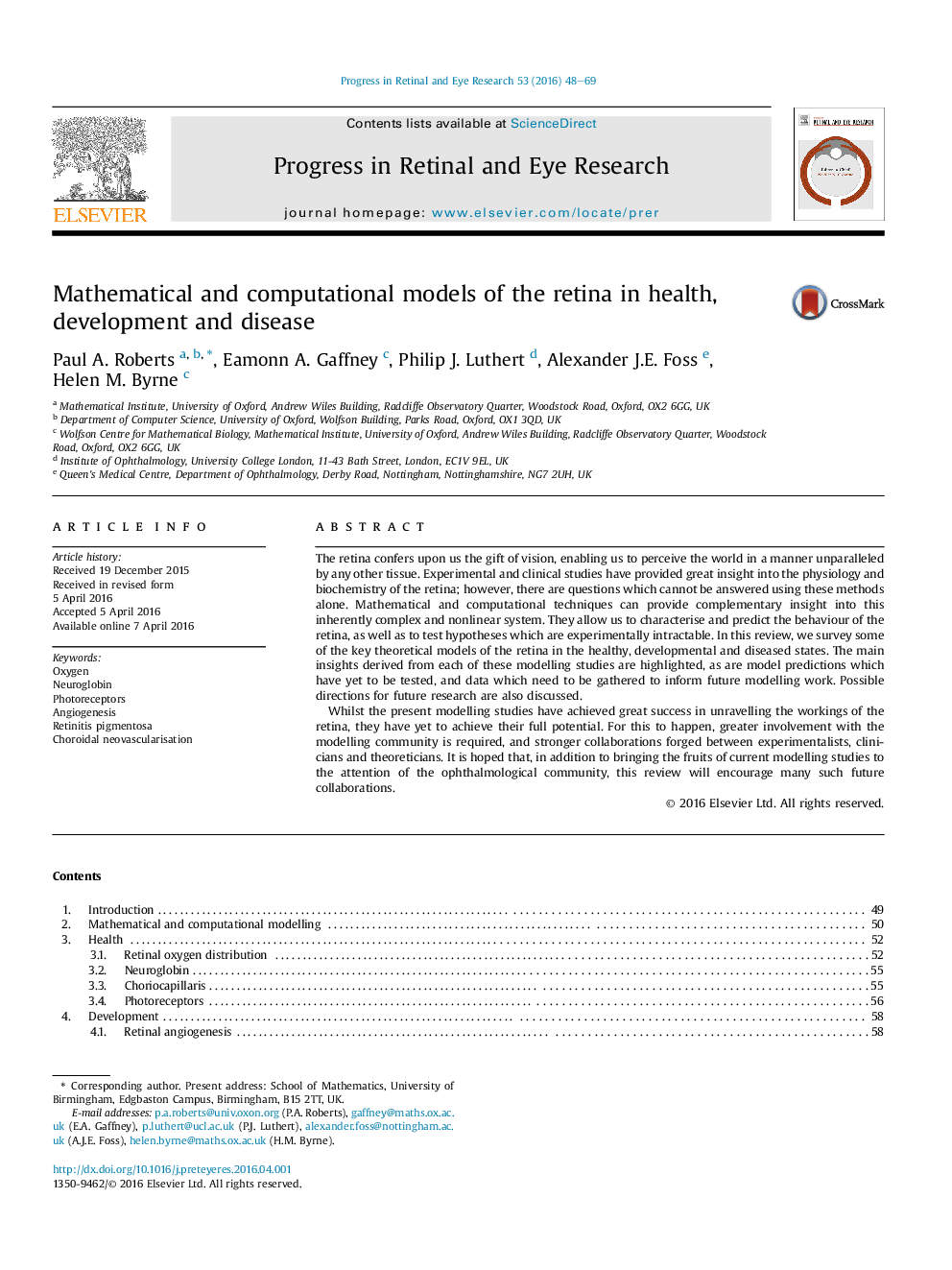| Article ID | Journal | Published Year | Pages | File Type |
|---|---|---|---|---|
| 4031890 | Progress in Retinal and Eye Research | 2016 | 22 Pages |
•Relevant mathematical and computational modelling techniques are explained.•The key findings of recent theoretical models of the retina are described.•Model predictions open to experimental confirmation are highlighted.•Data which need to be gathered to inform future modelling studies are detailed.•Possible directions for future theoretical/experimental collaborations are suggested.
The retina confers upon us the gift of vision, enabling us to perceive the world in a manner unparalleled by any other tissue. Experimental and clinical studies have provided great insight into the physiology and biochemistry of the retina; however, there are questions which cannot be answered using these methods alone. Mathematical and computational techniques can provide complementary insight into this inherently complex and nonlinear system. They allow us to characterise and predict the behaviour of the retina, as well as to test hypotheses which are experimentally intractable. In this review, we survey some of the key theoretical models of the retina in the healthy, developmental and diseased states. The main insights derived from each of these modelling studies are highlighted, as are model predictions which have yet to be tested, and data which need to be gathered to inform future modelling work. Possible directions for future research are also discussed.Whilst the present modelling studies have achieved great success in unravelling the workings of the retina, they have yet to achieve their full potential. For this to happen, greater involvement with the modelling community is required, and stronger collaborations forged between experimentalists, clinicians and theoreticians. It is hoped that, in addition to bringing the fruits of current modelling studies to the attention of the ophthalmological community, this review will encourage many such future collaborations.
Graphical abstractFigure optionsDownload full-size imageDownload high-quality image (205 K)Download as PowerPoint slide
